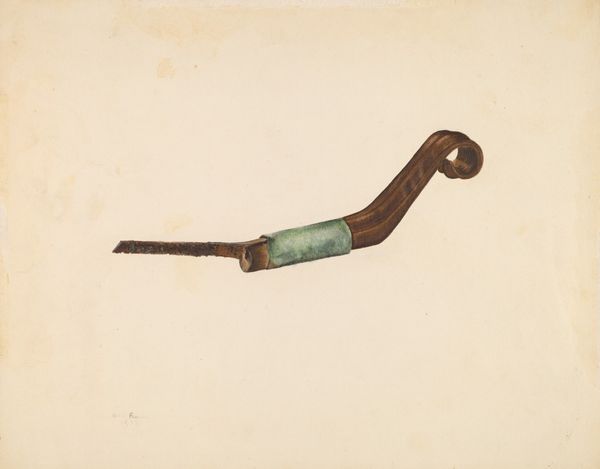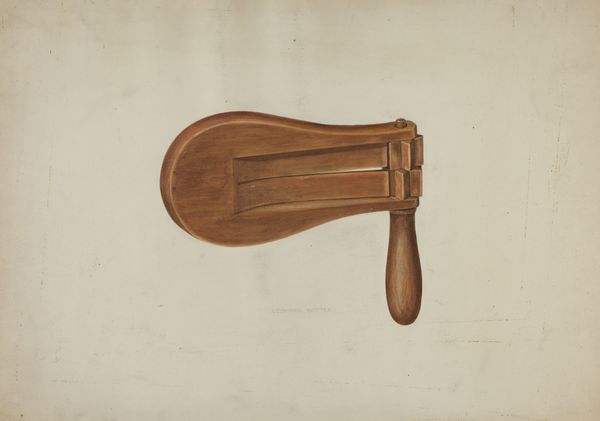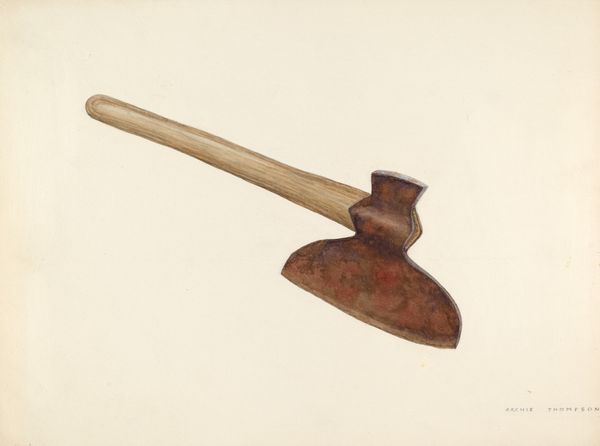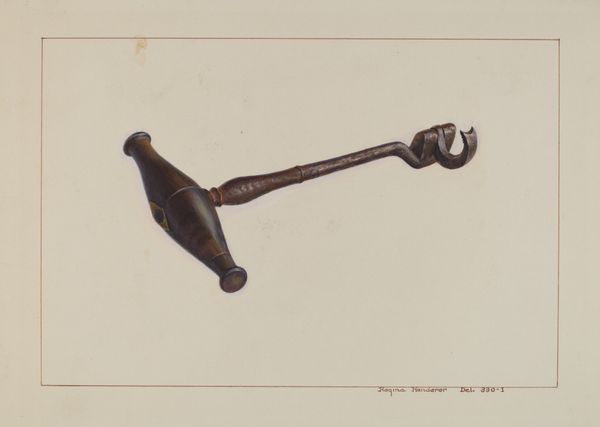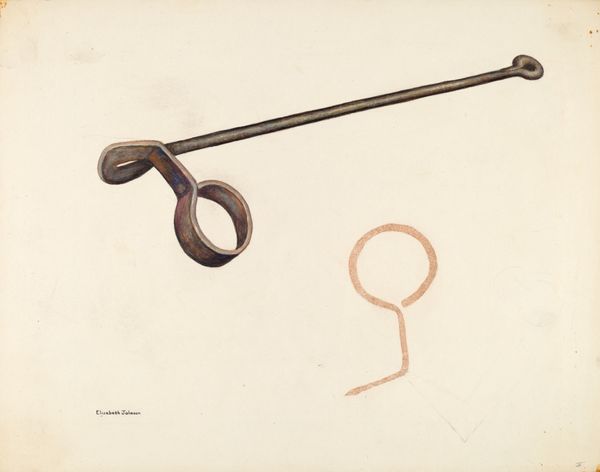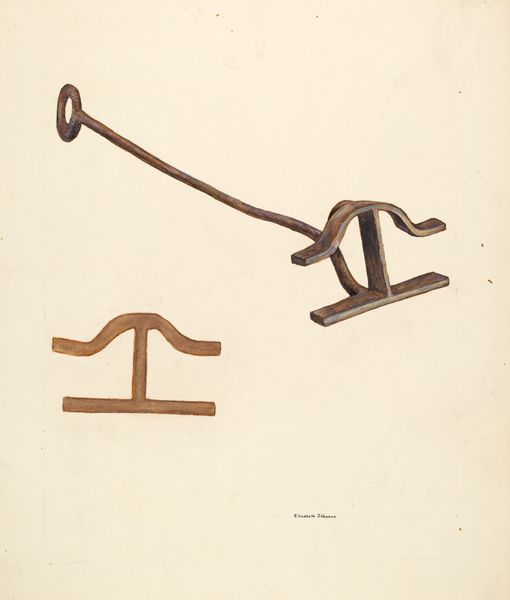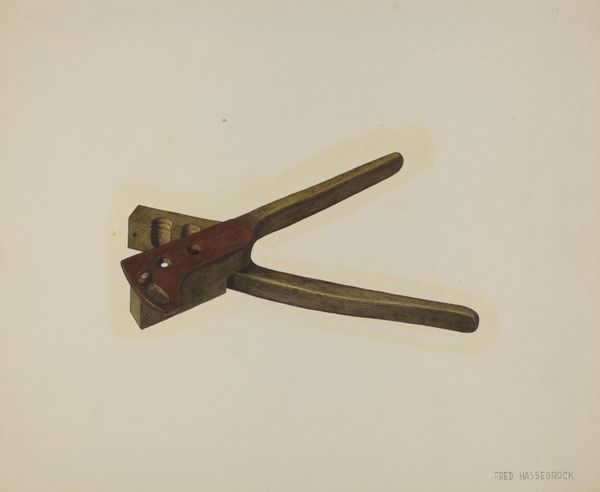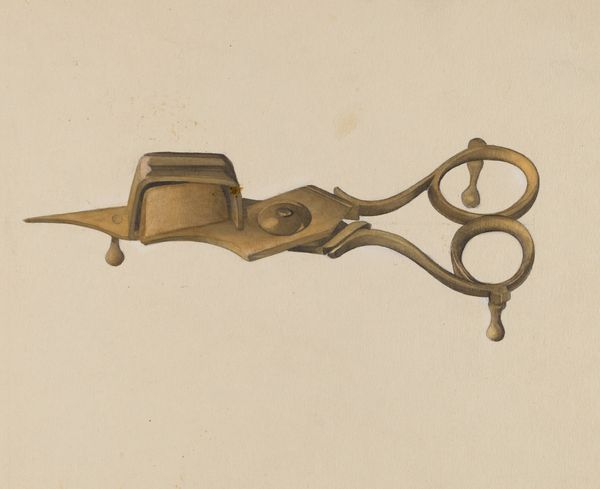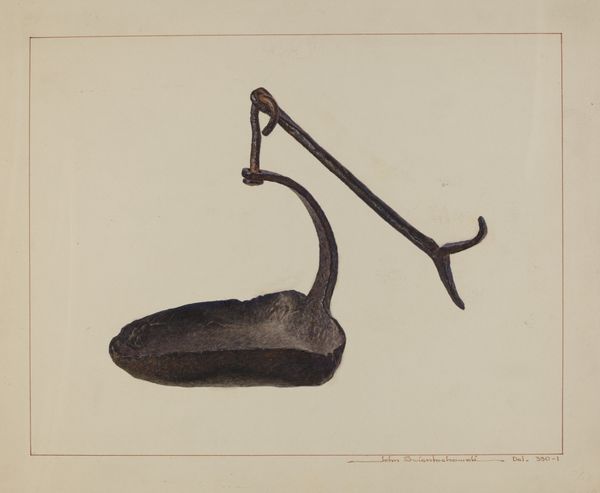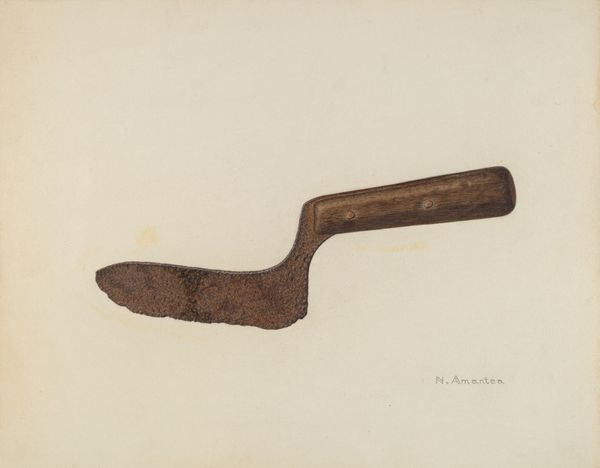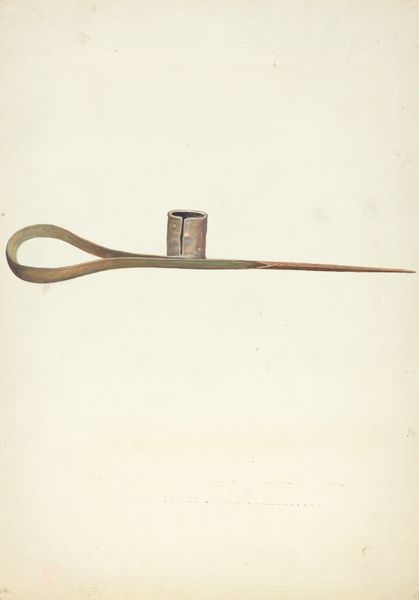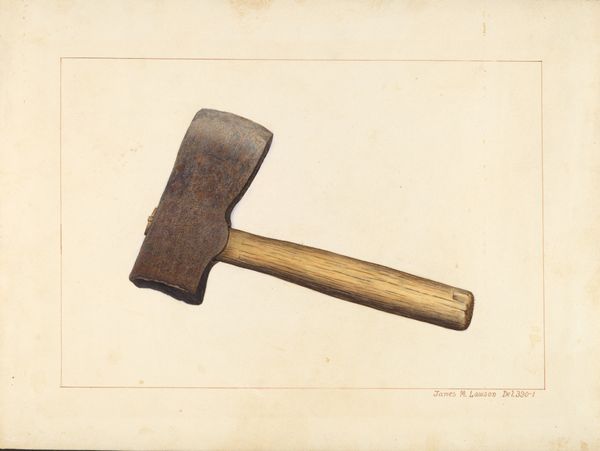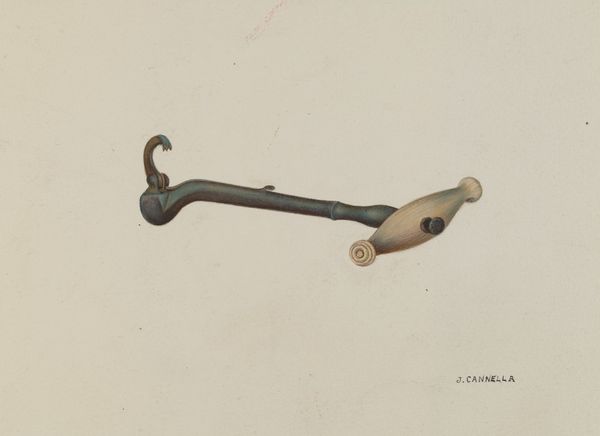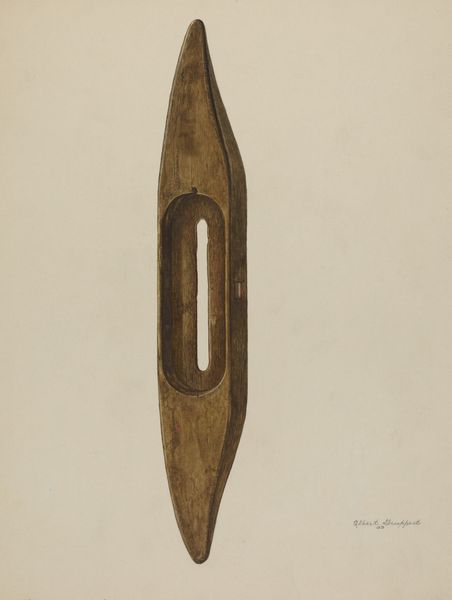
drawing, watercolor
#
drawing
#
water colours
#
watercolor
#
watercolour illustration
#
academic-art
#
watercolor
#
realism
Dimensions: overall: 44.8 x 36.7 cm (17 5/8 x 14 7/16 in.)
Copyright: National Gallery of Art: CC0 1.0
Editor: Here we have May B. Tebo’s “Dental Forceps,” created between 1935 and 1942 using watercolors. I'm immediately struck by the contrast between the mundane subject matter and the precision of the rendering. What do you make of this piece? Curator: Its strength lies in its formalism, wouldn't you agree? Note the composition, a deliberate arrangement. The instrument is isolated, floating almost, on a neutral ground, thereby emphasizing its form. Observe how the artist has meticulously rendered the object's texture and the play of light. The tonality, while limited, is skillfully deployed to suggest depth and volume. Editor: I do see that. The way the light catches the metal really does give it a sense of volume. It's almost hyperrealistic, even though it’s “just” a drawing of a tool. Why give this treatment to an everyday object? Curator: That question prompts us to consider the role of representation itself. Here, the familiar becomes unfamiliar through the act of close observation and careful transcription. The mundane is elevated, acquiring a new significance through aesthetic contemplation. The emphasis shifts away from the forceps' function and towards its form – its lines, curves, and the subtle gradations of tone. What is the interplay between utility and beauty in your opinion? Editor: So you are saying that the beauty is found in the details of the rendering, rather than what it represents? I am compelled by that point, actually. It seems that the goal is less to document a tool, and more to explore shape and texture. Curator: Precisely! We are invited to contemplate the object not as a dental instrument but as a study in form and light. It's a fine example of how close attention to formal elements can transform the ordinary into the extraordinary. Editor: This close reading really reframes how I see the artwork. Now I understand that, the beauty truly resides in the precision and artistic execution of the painting.
Comments
No comments
Be the first to comment and join the conversation on the ultimate creative platform.
